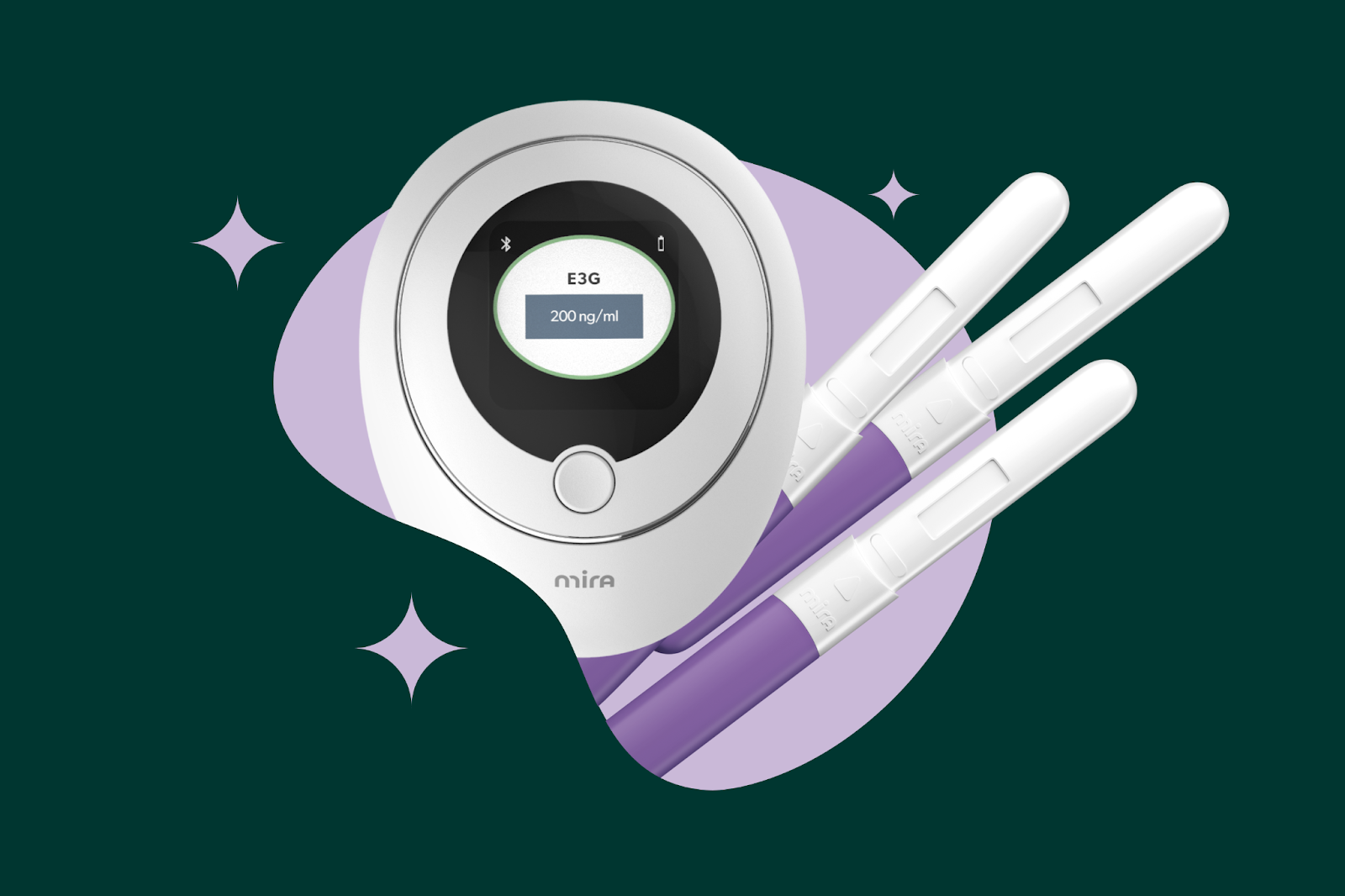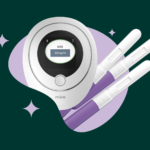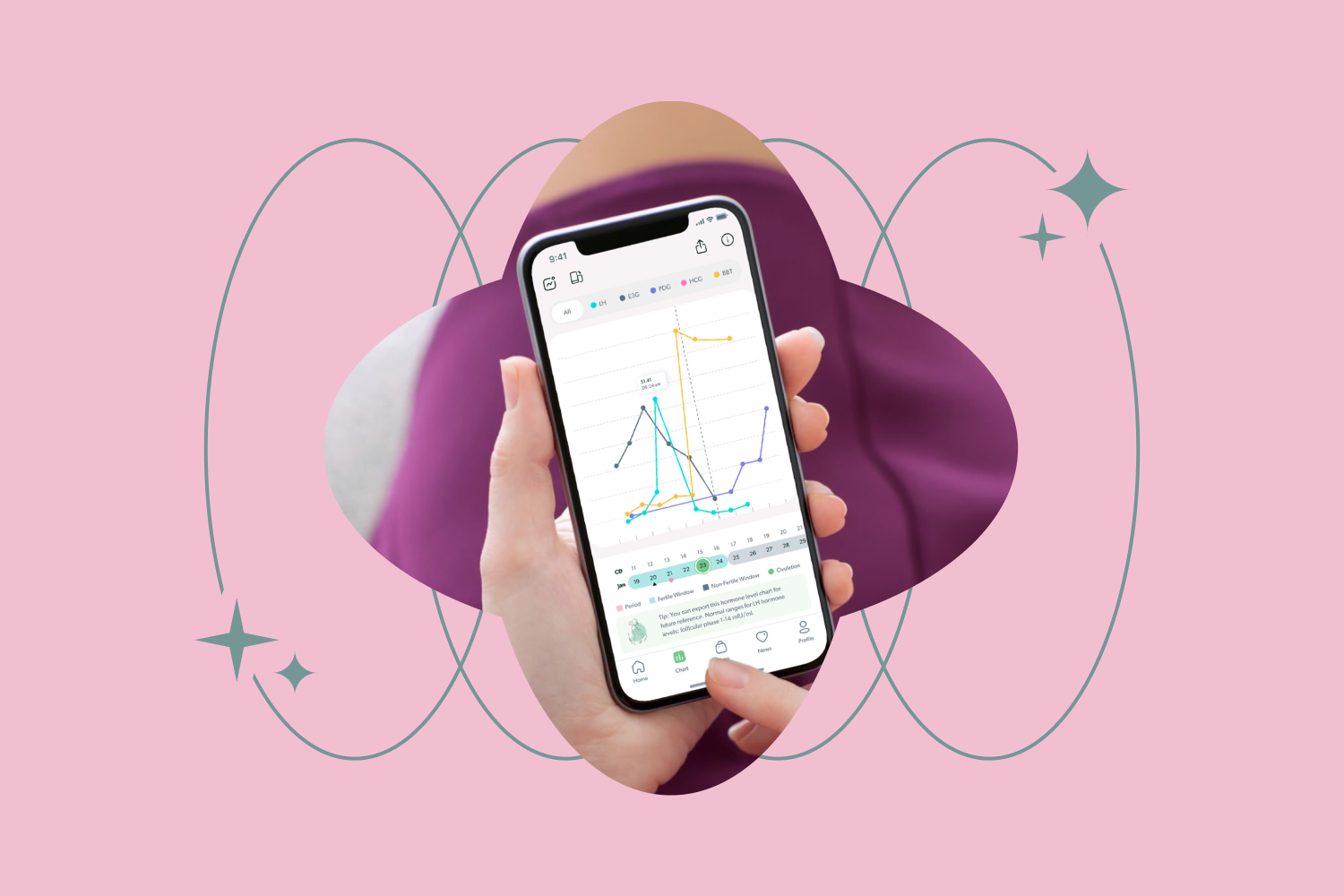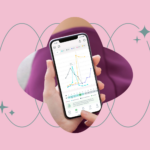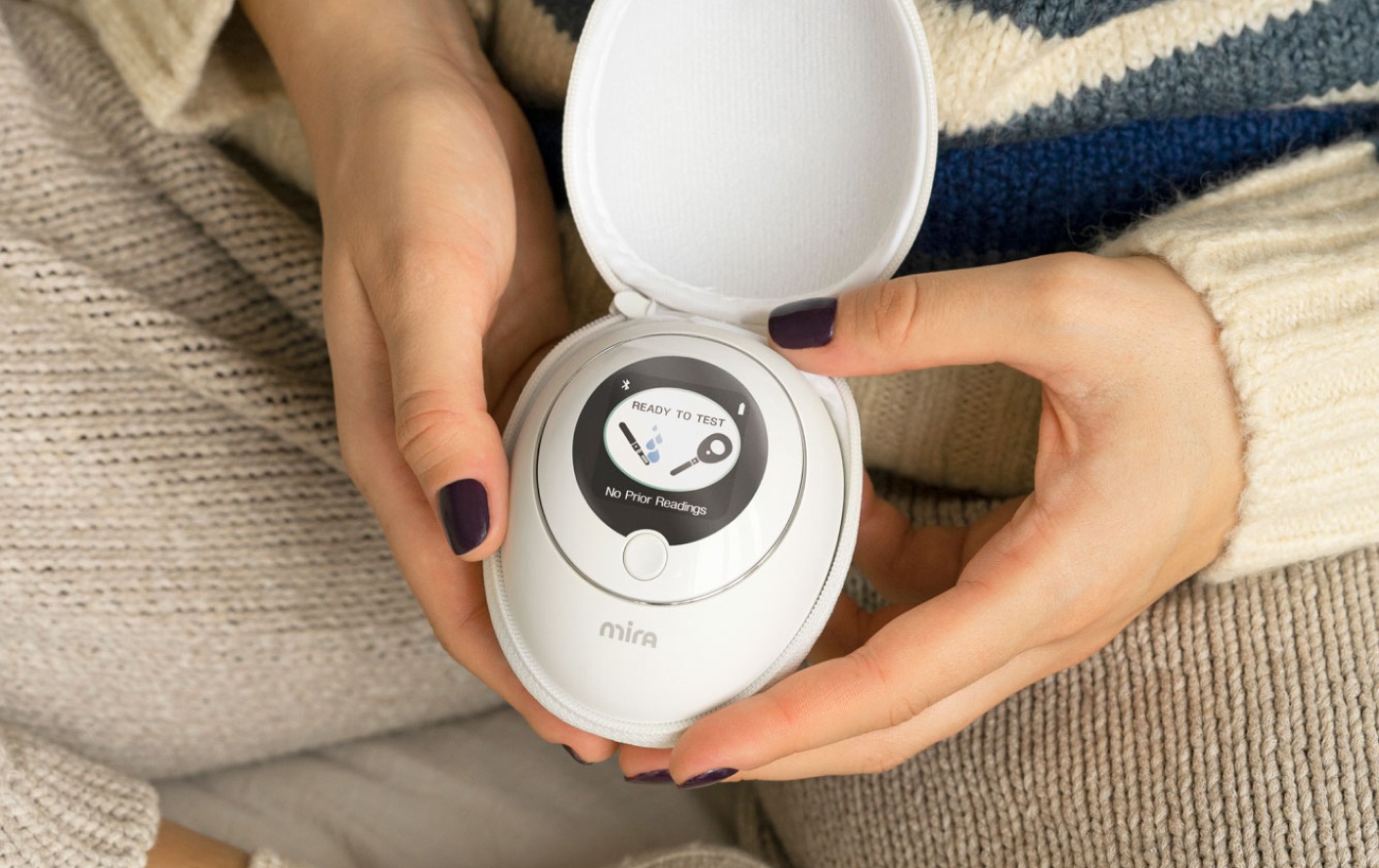A Guide to Basal Body Temperature and Ovulation (+BBT Chart)
The basal body temperature (BBT) method is a natural fertility planning method that can be used by women who are trying to conceive (TTC) and trying to avoid (TTA) pregnancy to predict ovulation. The method has been around a long time — since the 1930s, in fact — so there is a lot of evidence behind how basal body temperature and ovulation work together.
However, the BBT method relies on accuracy, and beginners often make mistakes when using it for the first time. Learning how to use basal body temperature to determine ovulation is important for an accurate estimate of your fertile method. Read on for helpful tips and facts you should know before trying it at home.

What is basal body temperature?
Your basal body temperature (BBT) measures your body temperature when you are completely at rest. There is a slight rise in BBT after ovulation, usually up to one degree Fahrenheit. Women can use this increase in BBT to predict when they are most fertile, to either conceive or avoid sex during that time.
Before ovulation, a woman’s average BBT is between 97 and 97.5 degrees Fahrenheit (36 degrees Celsius). After ovulation, a woman’s average BBT is between 97.6 and 98.6 degrees Fahrenheit(between 36.4 & 37 degrees Celsius). This BBT chart shows how a woman’s BBT can change after ovulation:
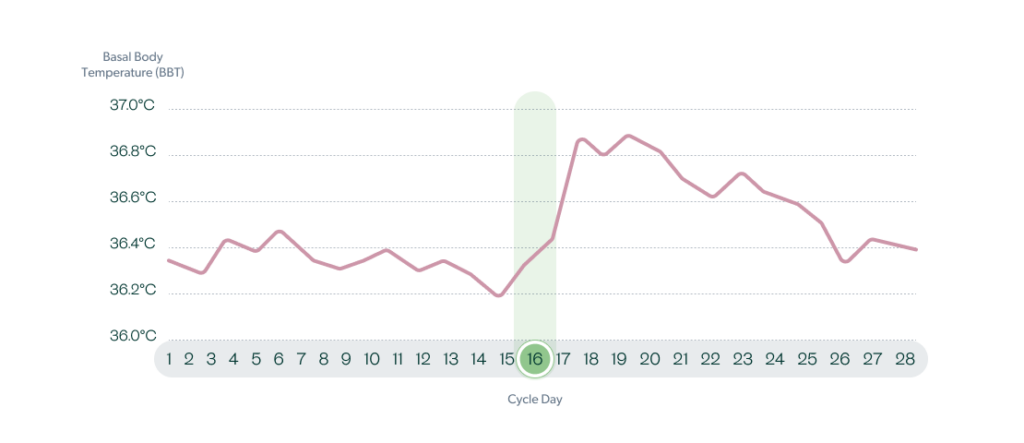
As you can see, the shift in BBT after ovulation is very subtle — in fact, BBT may change by as little as 0.1 degrees Fahrenheit!
A common mistake that beginners make with the BBT method is confusing BBT with regular body temperature. However, unlike regular body temperature, BBT can only be measured first thing in the morning, before you have gotten out of bed, using a special thermometer. BBT thermometers measure temperature in tenths of a degree, allowing women to track very slight changes in their body temperature.
BBT must be measured first thing in the morning because even small movements — like walking from your bed to the bathroom to brush your teeth — can cause slight increases in body temperature. Thus, for the most accurate results, you should take your BBT when still lying in bed at the same time every morning. Many women find it helpful to keep the BBT thermometer next to their bed at night to remind them to take their temperature as soon as they wake up the next morning.
Basal body temperature and ovulation
Before ovulation, there is a surge in a reproductive hormone called luteinizing hormone, or LH. This LH surge triggers the release of an egg by the ovary, a.k.a. Ovulation. The LH surge triggers ovulation and if ovulation happens then progesterone levels rapidly rise, along with BBT. These hormonal changes can be monitored at-home with a hormone monitor like the Mira Max Kit.
Changes in BBT become most noticeable in the days following ovulation. The increase in temperature after ovulation lasts 12 to 14 days in a part of the menstrual cycle known as the luteal phase.
It’s important to note that your most fertile days take place two to three days before your BBT rises. So, BBT can confirm that your ovulation has occurred, but it does not predict when you will ovulate. This limits its accuracy for preventing pregnancy but does help you track and monitor ovulation if you’re TTC.
How to track your BBT to estimate ovulation
Tracking your ovulation by temperature requires advance preparation. The BBT method requires you to buy a special BBT thermometer and measure your temperature every day before you get out of bed in the morning and at the same time every day.
You will also need to select a type of BBT chart to record changes in your BBT over time. Some women track their BBT with an app while others prefer to use graph paper. Even easier is a BBT thermometer that automatically syncs with an app, like the Mira BBT thermometer does, taking the guesswork out of manual logging and chart monitoring.
To track your basal body temperature, you’ll need to:
- Take your temperature every morning. It should be taken at the same time each day.
- Take your temperature before rising out of bed.
- Use a BBT thermometer orally.
- Check your temperature using your basal body temperature chart.
- Repeat the process for at least three cycles.
Choosing a BBT chart
Choosing a chart to track your ovulation body temperature while using the basal body temperature method doesn’t have to be complicated. You can find examples in fertility books or use a fertility calendar. Most people choose a digital chart or app, but you can also do it the old fashioned way and create your own paper graph to track your ovulation temperature. If you decide to make your own graph it’s as easy as plotting the temperature on the vertical axis (allowing one-tenth of a degree for each square) and the days of your cycle along the horizontal axis.
Digital solutions like online fertility calendars and fertility apps are popular because they not only reduce the chance of human error, but can help you log other information to pinpoint ovulation. The simplest way to chart BBT is with a thermometer that automatically syncs data with an app. Mira has a comprehensive app that can be used with or without our fertility device to help you understand your body’s natural fertility symptoms and our BBT thermometer syncs perfectly. Rather than charting on your own, or entering data, you can just check the chart on the app.
Common Issues with BBT Tracking
Although BBT chart ovulation tracking is relatively simple and inexpensive, there are some common issues that can derail your efforts. The relationship between BBT and ovulation can take months of tracking before you can successfully predict ovulation and research has shown that it can be somewhat unreliable. This is mainly due to the fact that BBT confirms when ovulation has already happened, rather than giving you the heads up that ovulation is about to happen. If you don’t want to wait on the months it can take to actually predict ovulation with the BBT method (and only if your cycle is regular), it’s better to rely on hormone monitoring.
Tracking your ovulation temperature can be influenced by many factors including how much sleep you get, timing consistency, using electric blankets, drinking alcohol, and waking up to use the bathroom before you check your temperature. For most, the burdens of accurately tracking your basal body temperature can be too much and there are plenty of other options. It’s not unhelpful to track your ovulation body temperature, but when combined with something like Mira’s hormone monitor, you can be sure of the accuracy and unlock new insights about your unique cycle patterns.
Last but not least, the basal body temperature method requires a specialized thermometer to accurately read the temperature fluctuations. A regularl thermometer is not accurate enough to read the tiny differences in temperature. You’ll need the right tool for the job, like Mira’s basal body thermometer to accurately capture those details.
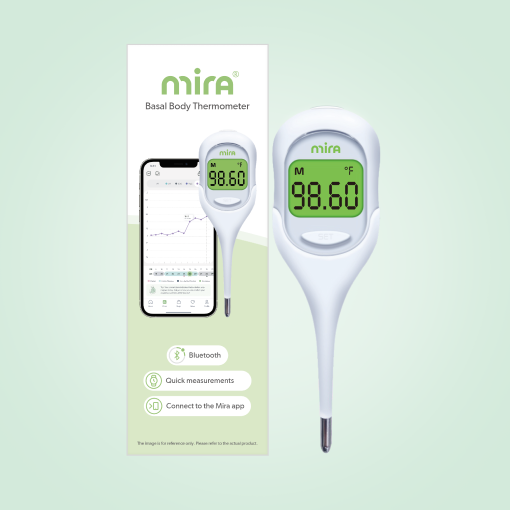
Factors that may impact BBT accuracy
Your basal body temperature can be influenced by a number of factors, directly impacting the accuracy of this method. The most obvious factors are interrupted sleep cycles or not taking your temperature at the same time every single day. Other factors include illness or fever, stress levels, alcohol, travel, certain medications, and shift work.
Dealing with irregular cycles
Having an irregular cycle can make it difficult to get an accurate estimate of ovulation. You may need to rely on additional measures to determine when you ovulate like tracking the consistency of your cervical mucus alongside your basal body temperature.
The best way to know for sure if you are ovulating is through hormone tracking and testing. Digital fertility trackers like Mira can determine the exact numerical value of your hormones to predict when you will ovulate with scientific precision. With this method, you can determine when you are ovulating, even if your ovulation is irregular.
Addressing temperature fluctuations
Your basal body temperature fluctuates daily but for some people it fluctuates more than others. Sometimes these fluctuations can be addressed by re-assessing your measuring routine and adjusting as necessary. Even small changes, like thermometer placement, can have a big impact on your measurements.
Changes in your routine can have the biggest impact on seemingly unstable temperature variations. The biggest culprits are sleep disturbances like getting less sleep than normal, a partner, child, or pet waking you up, being hungover, or getting out of bed before measuring. Checking your graph often can help you understand what personal factors are impacting your temperature readings and how you can possibly reduce fluctuations.
In doubt about your BBT values? Remember that you can have a session with one of our certified Fertility Coaches. They will also help with defining a fertility plan and setting up better lifestyle habits for your overall wellbeing.
Disclaimer: Fertility coaches do not provide diagnoses, treatment, or medication prescriptions. Our services are designed to offer education, promote well-being, and extend emotional support. Fertility coaches do not have access to your Mira results. You will be required to upload your Mira results prior to your appointment.

How accurate is the basal body temperature method?
The BBT method is popular for a reason: it can reliably confirm when ovulation has taken place, as long as you use it accurately and consistently. Forgetting to take or chart your BBT for just one day could cause you to miss your ovulation. This could result in an unplanned pregnancy if you are TTA.
However, BBT is only an estimate, and it cannot predict ovulation before it has occurred. To predict ovulation before it happens, you’ll need to track your levels of LH before and after ovulation to observe when an LH surge takes place.
Without tracking your LH levels and other hormones, you will only be able to estimate when you are going to ovulate next. This can be problematic because there is sometimes a great variation between ovulation days during different cycles, even in the same woman! As a result, you might get pregnant, even though you are TTA.
There are lots of studies on the pros and cons of the BBT method:
- A study among six physicians recorded basal body temperatures of three women. Out of their collective charting, the accuracy rate was 38.1%.
- One study of an app used to track BBT for pregnancy prevention found a typical-use failure rate of 8.3%, making it more effective than other fertility awareness methods.
- In another study with 30 women, BBT charting had a failure rate of 20% when estimating ovulation.
- In 2005, a medical review article concluded BBT was not an accurate method for predicting ovulation.
- New evidence suggests that wearable technology measuring wrist skin temperature may improve the accuracy of the BBT method.
There are even more factors that can cause the BBT method to fail. For example:
- You may not have time for consistent daily tracking.
- Having a fever will make tracking inaccurate.
- Being emotionally or physically stressed can raise your body temperature.
- Consuming alcohol, drugs, and prescription medication can cause temperature changes.
- Women do not always have consistent increases and decreases in BBT.
- Women have unique menstrual cycles that may make charting difficult.
These factors show that BBT can be a difficult method to follow and use consistently. A BBT chart is not always the best or most reliable way to predict ovulation to conceive or avoid pregnancy. However, it can be helpful, especially in combination with other tracking methods, like using a digital fertility tracker.
Other ways to track your cycle
There are many other natural fertility planning methods you can use with or without the BBT method to prevent or plan for pregnancy:
- Ovulation calculators. Ovulation calculators give a simple estimate of when you ovulate based on the length of your cycle in calendar days. The formula used is to calculate the date of ovulation is (day of your next period – 14 days = ovulation day). The formula used to calculate your fertile window is (day of ovulation – 4 days = start of your fertile window). However, ovulation calculators are flawed because every woman’s cycle is different, and ovulation days may vary from month to month.
- Cervical mucus method. Many women use the cervical mucus method alongside the BBT method to track their fertility. Cervical mucus is the slight discharge you may notice in your panties when you are feeling normal and healthy. Throughout most of the month, your cervical mucus is thick, creamy, and white or off-white in color. When a woman is most fertile, however, the cervical mucus becomes clear and stretchy, like an egg white. You can collect and observe the changes in your cervical mucus using a finger, a piece of toilet tissue, or a pantyliner, but because many things can affect your cervical mucus besides fertility — such as infections and sexual activity — you may want to refrain from relying solely on the cervical mucus method.
- Ovulation predictor kits (OPKs). OPKs are drugstore tests you can purchase that will give you a positive or negative result to tell you if you are currently ovulating. They work the same way an at-home pregnancy test does, by measuring hormone concentrations in your urine. OPKs measure your LH levels and compare them to a threshold drawn from population averages to let you know if you are ovulating. The best test kits are 99% accurate, but sometimes give false negatives or false positives if your unique hormone levels differ from the population average. You must also test frequently to get the most reliable results, which can get expensive over time.
- Digital fertility trackers. Digital fertility trackers like Mira improved upon OPKs by measuring LH levels in your urine with laboratory-grade accuracy. Because it relies on artificial intelligence to make smart predictions about your cycle, Mira can detect ovulation even when your LH surge is small or when you have many smaller surges in LH throughout your cycle (which is often due to a hormonal condition like polycystic ovarian syndrome). Mira also learns when you do and don’t need to test and will send you reminders, saving you money on ovulation test strips and making sure you don’t forget to track your hormones.
Where to start with BBT when it comes to ovulation
When used consistently and correctly, the BBT method is one of the more accurate fertility awareness methods (FAMs) for preventing and planning pregnancy. However, like all FAMs, the BBT method is most accurate when used in conjunction with other tracking methods. Using BBT along with other metrics to predict ovulation is known as the symptothermal method. Combining the BBT method with other data like cervical mucus changes or fertility hormone concentrations can help you get pregnant faster or avoid pregnancy more reliably than using BBT alone.
Mira’s Editorial Process
All content produced by Mira meets stringent editorial standards, ensuring excellence and accuracy in language and medical precision. Every piece undergoes thorough fact-checking and review by qualified professionals. Check out our full editorial process to learn more.




